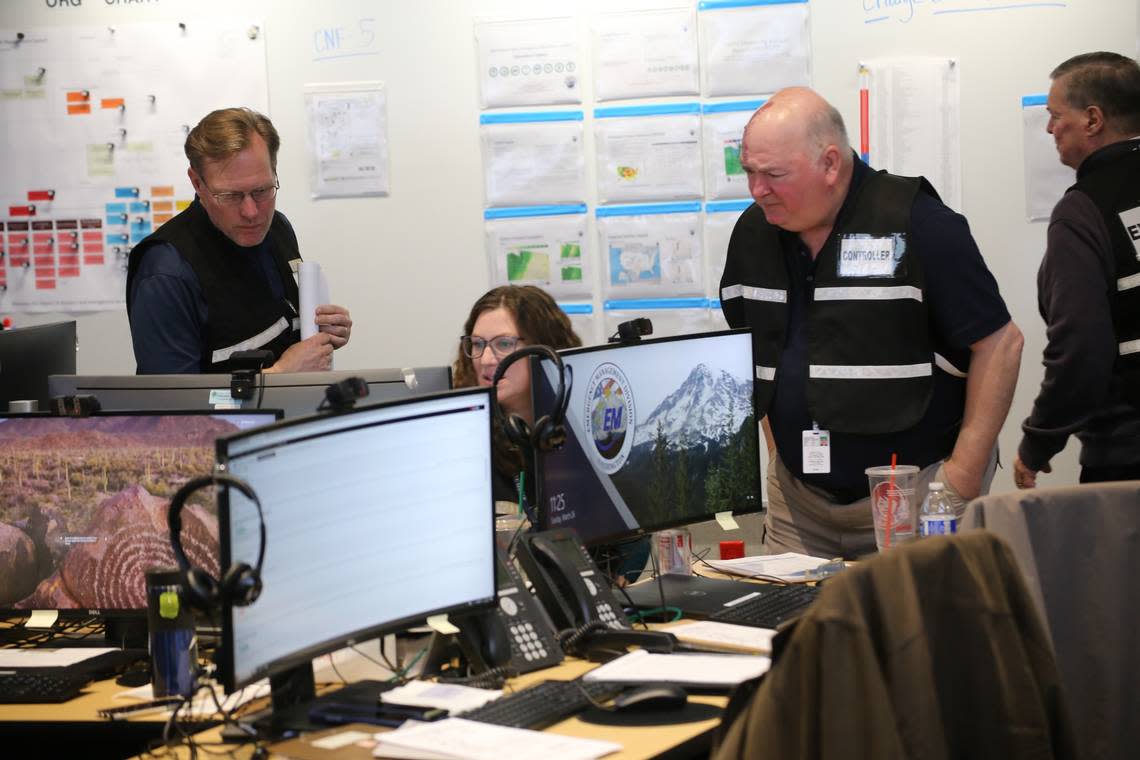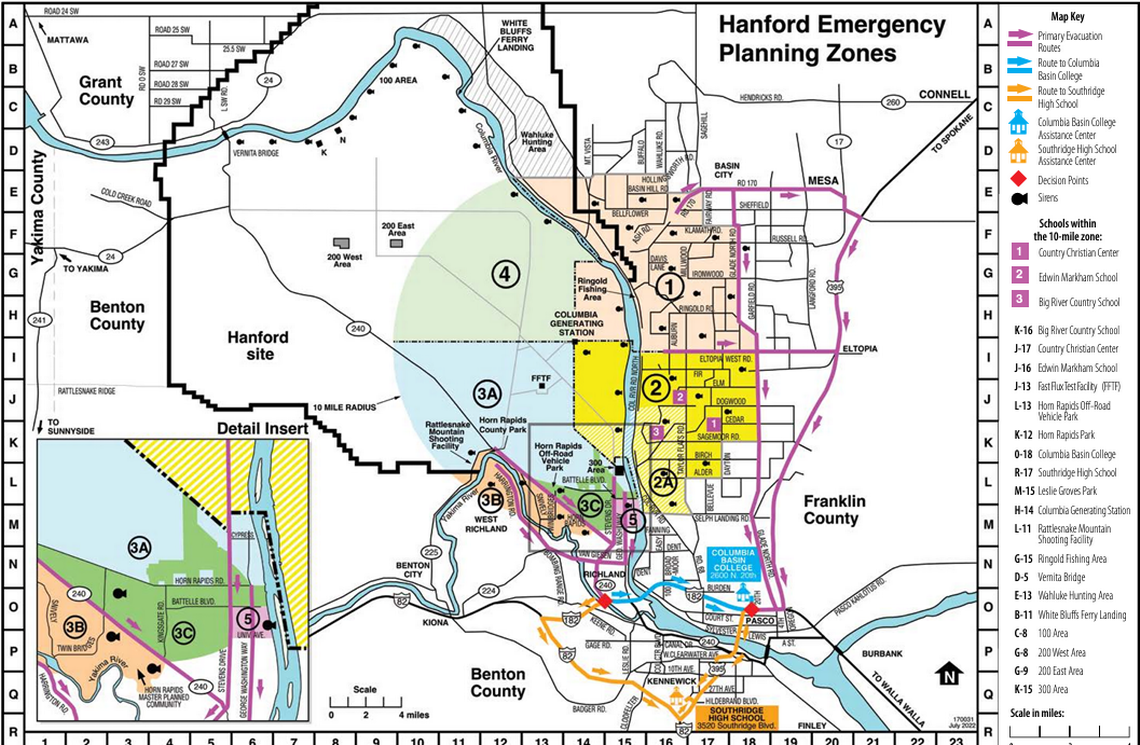Northwest’s only nuclear plant is in WA. Are you ready for a radiation release emergency?
The only nuclear generating plant in the northwest is located in Richland, near the Hanford site. While the chances of nuclear disaster are low, the plant is legally required to prepare for such emergencies on a regular basis.
Multiple agencies meet every year to practice and discuss emergency situations. At least once every eight years, a more thorough exercise is done for radiation release preparedness. This more advanced exercise was most recently done in March 2024. A public affairs representative for Energy Northwest says they do additional training drills with Benton and Franklin county and other agencies multiple times a year.
Several agencies conferred at the Columbia Generating Station and at the Emergency Operations Center, including Energy Northwest, who operates the facility, the Washington Emergency Management Division, FEMA, the Nuclear Regulatory Commission, along with several state department and county representatives from Washington and Oregon.
The three-day exercise included protective action and important decision simulation, along with specified time for assisting local jurisdictions. They also conducted a mock press conference.
“Every disaster – whether manmade or natural – has questions that jurisdictions have to consider, and exercises like this one prompts officials to not just ask these important questions but ensure they have policies and procedures in place before a disaster were to really occur,” states the press release from the Washington Military Department.
No major issues were identified during the exercise, according to the press release. In fact, the plant has operated for 40 years without a single public evacuation.

So, what would happen if there was radiation release from the Columbia Generating System? How should area residents prepare and what should they know?
Radiation release response in WA
In the event of an emergency, the station would have 15 minutes after emergency declaration to notify Benton and Franklin counties (the two counties within a 10-mile radius, per nuclear plant guidelines) and an hour to notify the Nuclear Regulatory Commission.
Both Benton and Franklin counties have thorough emergency response plans and regular community meetings discussing responses. Evacuation routes and emergency action guidelines are sent to residents every year. Emergency sirens in the area are tested regularly, and other alert systems are in place as well, including the CodeRED system, Emergency Management notifications, radio alerts and direct phone notification.

There are three protective measures: evacuate, shelter in place, and monitor and prepare.
Protective actions could mean evacuations in certain areas, likely the areas closer to the plant, while others would be instructed to stay home and close their vents.
There are two emergency response plans, one for plume impacts and one for ingestion impacts. The direct impacts of a plume would impact parts of the two closest counties, Benton and Franklin. The ingestion impacts go much further, about 50 miles out from the site, including eight counties in total.
Officials would follow the plume of radiation to determine responses. They’d have to consider how long evacuations could last and estimate when residents could return to their homes. Considerations would be made for local agriculture, and whether local food sources could be protected from contamination.
Depending on the specific release, it is possible the Columbia River would have to be closed to the public as well.
Since the Columbia Generating Station is the only nuclear plant in the northwest, Washington counties outside of the impact areas have very low radiation release risk.
How to prepare for radiation emergency
Households in Benton and Franklin counties are expected to have a family disaster plan and maintain essential supplies for self-sufficiency. Residents should be equipped for at least 72 hours, but the recommended time frame is two weeks.
The Washington State Department of Agriculture sends a calendar and emergency information packet to neighbors of the Hanford site and Columbia Generating System. It includes a checklist of items to have on hand in case of a radiation emergency:
Medical items
Medicines
Glasses/contacts
Dentures
Special food for dietary needs
Medical alert data (for anyone with special needs or concerns)
Clothes and bedding
Enough clothes for three days away from home
Shoes
One sleeping bag or two blankets per person
Paperwork
Driver’s license
Birth certificates, passports, titles and deeds
List of medications and dosages
Cash
Checkbook
Debit/credit cards
Personal hygiene items
Shaving items
Soaps
Sanitary items
Towels
Toothpaste and toothbrush
Food
Canned food
Can opener
Water
Emergency items
Portable radio and spare batteries
Tool kit
Flashlight with batteries
Emergency calendar for Hanford neighbors
List of relatives with addresses and phone numbers
Additional lists are given for those with babies and pets:
Baby supplies
Baby food
Baby formula
Diapers and baby wipes
Favorite toy
Pet supplies
Collars, leashes
Canned pet food
Bowl for pet food and water
Pet medications
Copy of the pet’s vet record
Pet carrier for smaller pets
Blanket from inside the home (do not bring beds or blankets that have been outside)
In the case of a radiation release emergency, you likely will not have time to gather all these items. You should have as much as possible already assembled in a transportable container or bag, somewhere the whole household can access. Be prepared to grab everything else that’s needed as quickly as possible.
